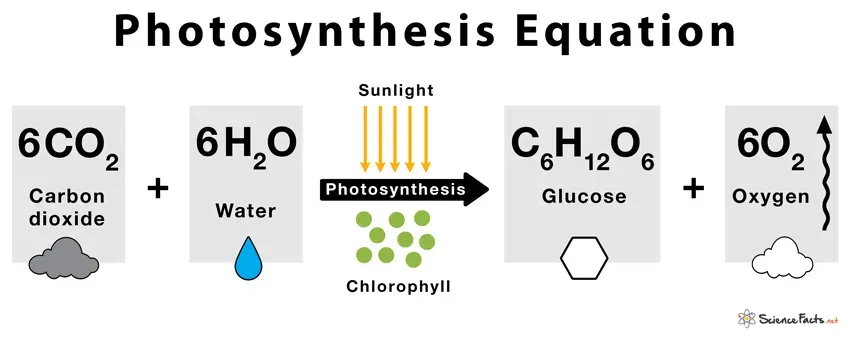Photosynthesis, the amazing process by which plants make their own food, can be summarized by a simple chemical equation:

Reactants of Photosynthesis
- Water (H₂O): Plants absorb water through their roots, transporting it to the leaves where photosynthesis takes place.
- Carbon dioxide (CO₂): This gas is taken in from the atmosphere through tiny openings in the leaves called stomata.
Explore All Questions and Answers Related to Photosynthesis
Products of Photosynthesis
- Glucose (C₆H₁₂O₆): This is the sugar that plants use for energy and growth. It’s the main product of photosynthesis and the building block for many other organic molecules.
- Oxygen (O₂): As a byproduct of the reaction, oxygen is released back into the atmosphere, replenishing the air we breathe.
Here’s a handy way to remember:
Plants take in Water and Carbon Dioxide, and using the power of Sunlight, they produce Glucose and Oxygen.
Additional details
The process of photosynthesis occurs in two stages:
- Light-dependent reactions: Sunlight captured by chlorophyll pigments in the leaves energizes electrons, which are then used to produce ATP (adenosine triphosphate) and NADPH, energy molecules that power the next stage.
- Calvin cycle (light-independent reactions): Using the energy from ATP and NADPH, carbon dioxide is fixed into organic molecules, eventually forming glucose.
While the equation above represents the overall process, photosynthesis is a complex series of biochemical reactions involving many intermediate molecules.
Explore All Important Questions and Answers on Biology
Read More FAQs on Photosynthesis

